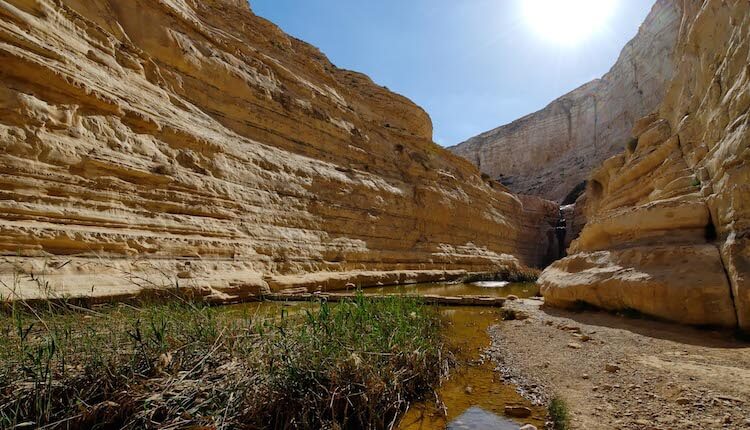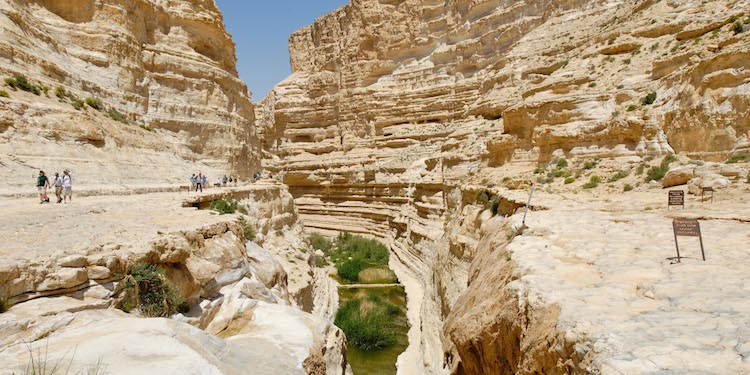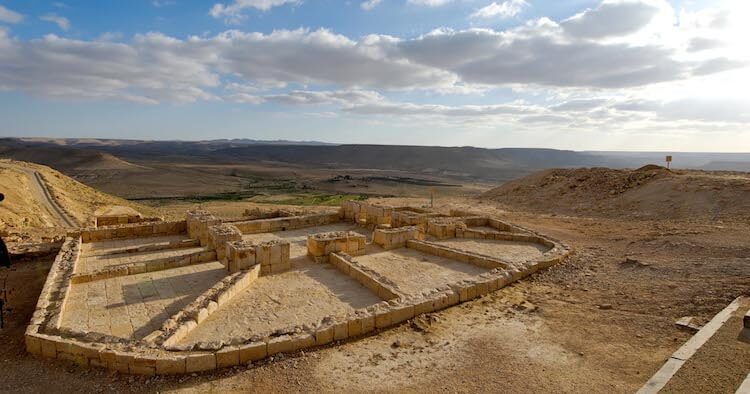Moses and the Hebrew nation, traveling in the wilderness of Zin, would have stood speechless as they reached the precipice of this breathtaking canyon—the Nahal Zin.

(Photo: The Nahal Zin and Ein Avdat. Courtesy of the Pictorial Library of Bible Lands)
The Nahal Zin, or Ein Avdat, drains the northeastern Negev highlands to the Dead Sea, dropping 500 feet in a series of waterfalls. The Ein Avdat spring surfaces at the base of a spectacular 50-foot waterfall to create a saltwater pool 25 feet deep. The origin of the spring remains an enigma.
Visitors today can park at a beautiful overlook and hike down into the canyon. The view is breathtaking.
Even Moses’ jaw would have dropped when he saw it.
One look at the gorge reveals why the Nahal Zin served as part of the southern border of the Promised Land.
Your southern side will include some of the Desert of Zin along the border of Edom. On the east, your southern boundary will start from the end of the Salt Sea, cross south of Scorpion Pass, continue on to Zin. —Numbers 34:3–4
In 1956, a hiking trail was constructed, after which time it became part of the Israel National Trail running from Eilat to Dan.

(Photo: Nahal Zin and Ein Avdat. Courtesy of the Pictorial Library of Bible Lands)
Avdat National Park
Not far from the Nahal Zin, the Avdat National Park allows visitors to explore ancient Avdat. Founded in the 2nd century BC, Avdat was a stop along the “Spice Route,” a caravan highway where merchants transported spices, herbs, and perfumes from Arabia via Petra to the Mediterranean.
- The Nabateans were masters at water conservation, and in the barren Negev every drop was precious.
- The Nabateans designed elaborate systems to catch every ounce of moisture.
- Their methods were so effective they even grew vineyards and built winepresses; the remains of four winepresses were discovered.

(Photo: Avdat winepress. Courtesy of the Pictorial Library of Bible Lands)
Avdat’s heyday came during the Byzantine period (4th-7th centuries), and the remains of two splendid churches allow visitors to picture the luxurious atmosphere built there for worship.
Explore Avdat in Google Street View
You’ll find these sites and more in a book I wrote for the Israel Ministry of Tourism, 100 Off-The-Beaten-Path Sites. You can download a free copy.
